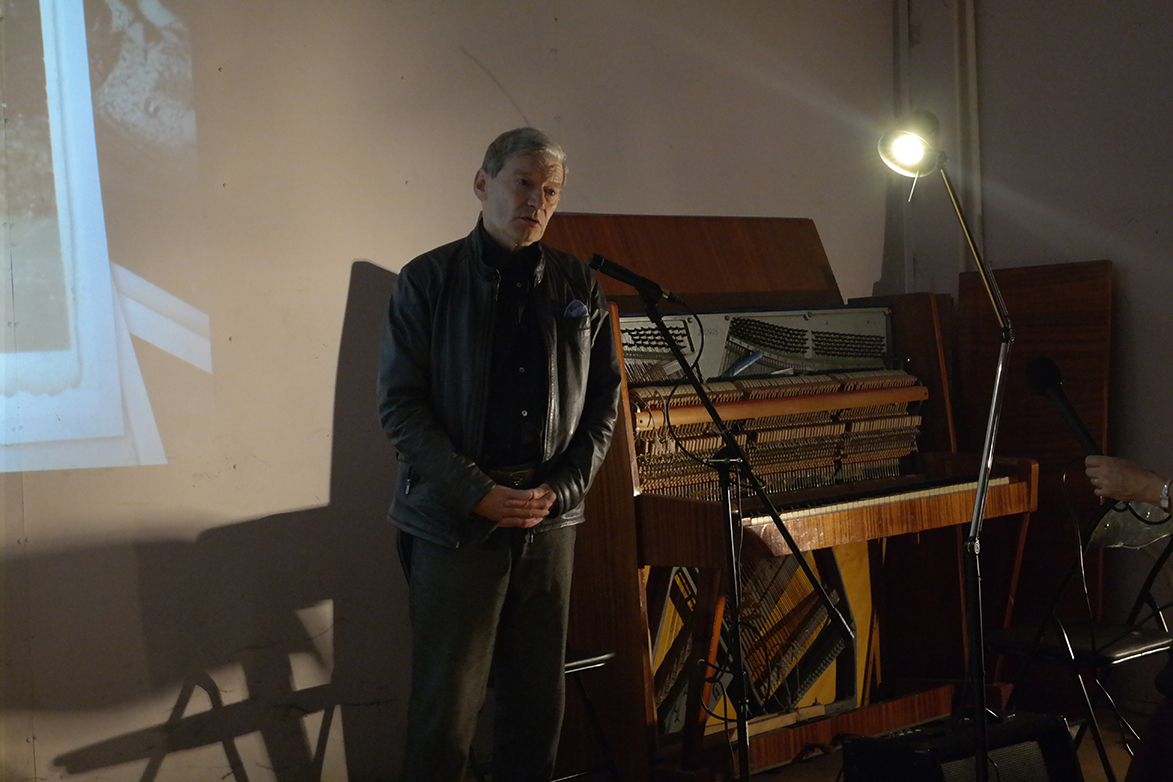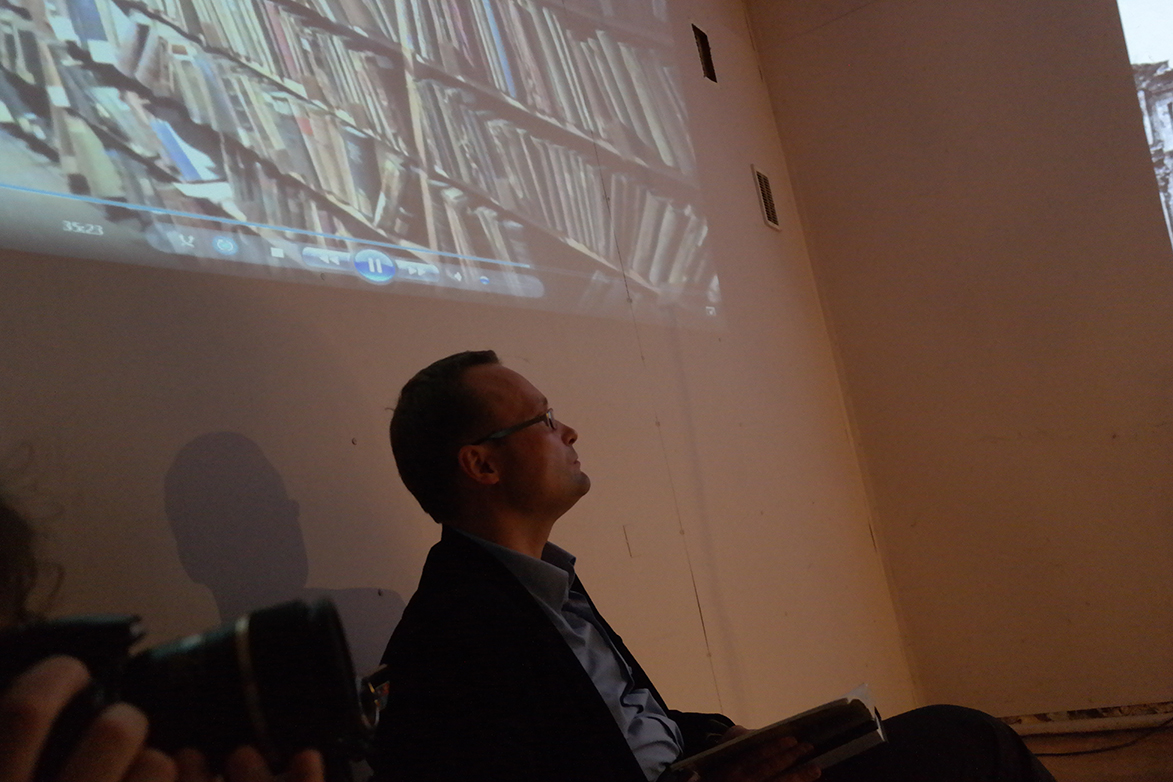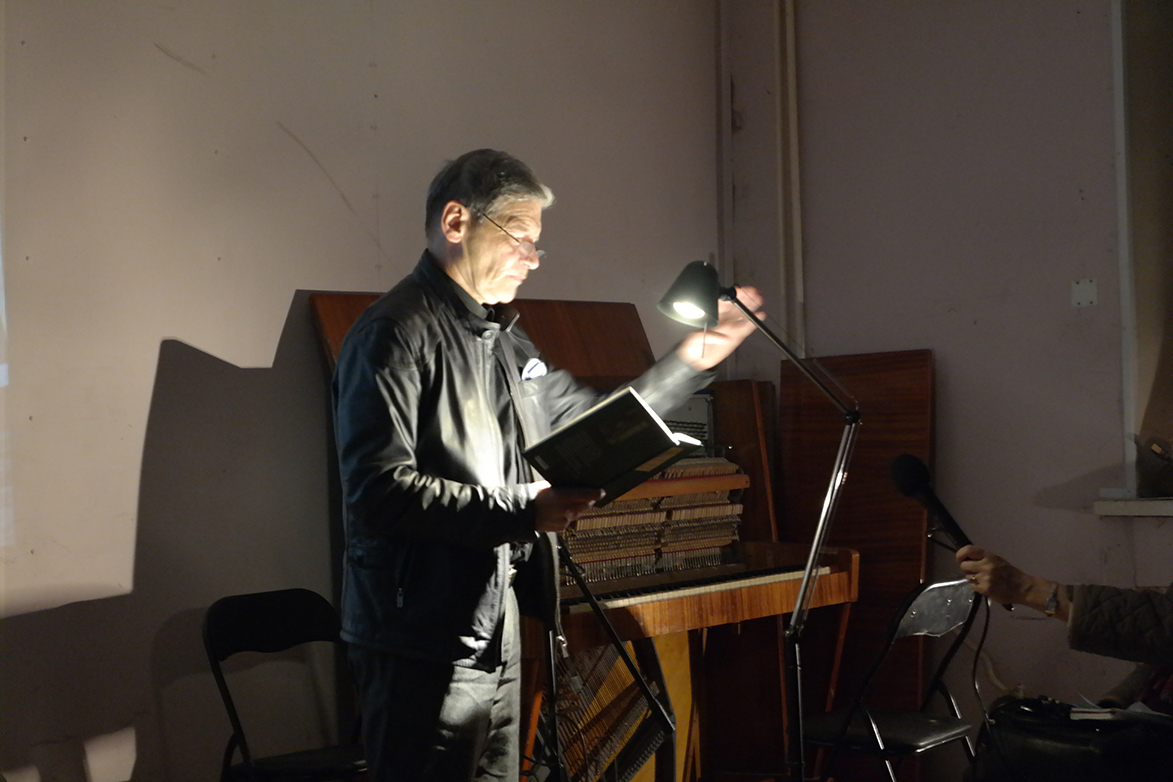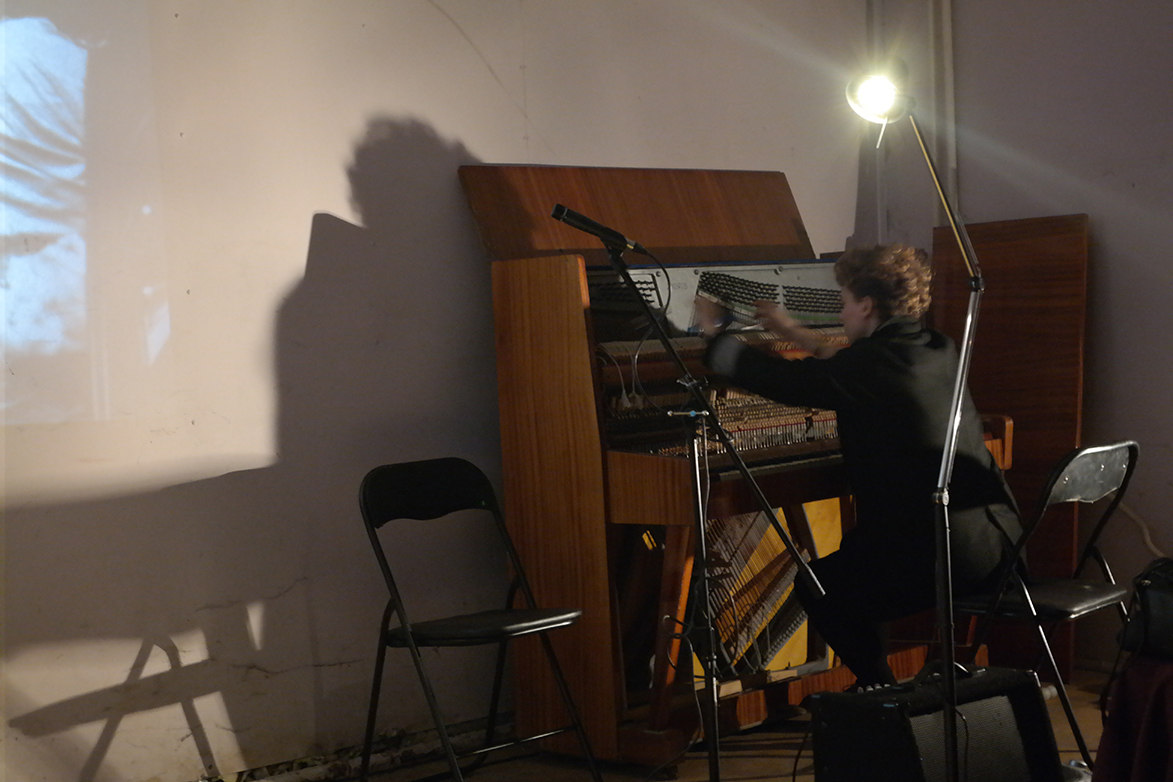| | Avrom Sutzkever‘s poetry performed at Vilnius Ghetto Library Ruins |
 |
 |
| |
|
|
After seventy one years of silence, on 25 September the reading of literature returned for one night to the former library of Vilnius ghetto (Žemaitijos St. 4) and its desolate walls. The event was held to introduce the book of stories The Green Aquarium by Avrom Sutzkever (1913–2010), which was translated from Yiddish into Lithuanian in 2014 by Mindaugas Kvietkauskas of the Institute of Lithuanian Literature and Folklore. The night turned into an emotional sharing of memory with the help of poetry and music and many interconnecting stories.
Avrom Sutzkever survived Vilnius ghetto and later became a world-renowned poet. Although this is his first book in Lithuanian, readers found it very easy to relate to. The author’s subtle language, and his authentic poetry are easily and intimately perceivable to Lithuanian readers. Moreover, Sutzkever’s poetry is based on his experience of both the inter-war and war period of Vilnius. The book is rich in its visions of Vilnius, symbols of its multicultural essence, and authentic poetic solutions, all of which are very much needed for unresolved questions of painful memory. According to Markas Zingeris, one of the writers who participated in the event and director of the Vilna Gaon State Jewish Museum, Sutzkever succeeded in opening a deep wound of the subconscious and at sedating painful memories in a humanistic fashion – in spite of the tragic fate of his own family. He did this by mitigating the stinging pain of memories with the help of the beauty of poetry.
 |
 |
The environment of the library of the ghetto had a similar healing effect. Volunteers launched two rallies to clean up the building. People from various walks of life, mostly students and volunteers from the initiative called “Names” to commemorate victims of the Holocaust, enthusiastically took up their brooms and donned dust masks to start cleaning the former library. As rubbish was being removed from the premises, different stories about the building unfolded: a shelter for homeless people, rooms of J. Tallat-Kelpša conservatoire, student hostel, Jewish museum of the Soviet period, and ghetto library.
During the event, in this dimly lit premises with its windows nailed shut, a slide show showing pictures found in the ghetto and sights of bombed Vilnius were projected onto a wall. One wall had its long-gone bookshelf with old books restored in a ghostlike way: by projecting a photo of the bookshelf onto the wall. The organisers took books, which had earlier belonged to the ghetto library, from school textbooks in Hebrew to world literature classics published in Yiddish, now stored in the National Archive Fund, and made pictures of them in St George’s Church.
According to testimony of Fania Brancovskaja, a former partisan who survived the ghetto, and who also participated in the event, books from Jewish homes flooded into the library. Before being herded into the ghetto people were allowed to choose what to take and many took some of their books, which they then donated, to the library. The library subsequently became one of the main centres of life in the ghetto. People read books and attended concerts (symphony and jazz orchestras were founded in the ghetto), without knowing whether they would live to see another day; they held performances (the activity of the ghetto’s theatre was legendary – there were over 150 performances in two years!), and they wrote verses. Fania Brancovskaja – librarian at the Vilnius University Yiddish Institute – has held onto her library card since and showed it to the audience at the event. Within a short time as many as 100,000 (!) books had been lended to the readers. Is that fact alone not poignant testimony to the stoicism of a people who suffered overwhelming catastrophe and found themselves on the brink of annihilation?
|
|
Gražvydas Kardokas, a musician from Kaunas, improvised on the passages of The Green Aquarium with the saxophone and the pipe. Gailė Griciūtė, pianist and composer, performed a musical experiment on an old out-of-tune piano, with no top, which had been dumped by the Juozas Tallat-Kelpša conservatoire as no longer usable. The idea of the composer was to recall music from an old, wounded, discarded instrument, in much the same state as the building itself were the stories were relived that evening.
Music, the poetic language of Sutzkever, and moving stories from living memory took the stage in turns. The storytellers of the evening were writer Markas Zingeris, Fania Brancovskaja, bibliographer and ghetto survivor, Esfira Bramson-Alpernienė, who saved books with as much devotion as others saved human lives, and Professor Irena Veisaitė. Avrom Sutzkever’s stories and verses were read by the book’s translator Mindaugas Kvietkauskas, poets Alvydas Šlepikas and Indrė Valantinaitė, historian Juozapas Paškauskas, and art critic and sound artist Tautvydas Bajarkevičius, Akvilė Rėklaitytė.
Everyone who contributed to the event and this first reading of Sutzkever’s poetry hopes that the building, which now belongs to the Vilna Gaon State Jewish museum, will become, with time, an open cultural centre reflecting the magnificent heritage of Jewish culture in a living way.
Authored by Akvilė Rėklaitytė
Partners:
Vilna Gaon State Jewish Museum
Institute of Lithuanian Literature and Folklore
Martynas Mažvydas National Library of Lithuania
Pre-history of the event:
http://www.lzb.lt/en/volunteers-tackle-cobwebs-and-dust-at-vilna-ghetto-library/
http://www.huffingtonpost.com/ellen-cassedy/out-of-the-vilna-ghetto-d_b_5826502.html
http://www.bernardinai.lt/straipsnis/2014-09-18-ellen-cassedy-is-vilniaus-geto-dulkes-ir-ryztas/122003
|
| | Modified: 12/10/2014 |
|
| | | | | Information | | 2017.03.01 | |
|
If you want to order a guided tour or educational programme please contact us in advance:
tel. +370 60163612,
email: muziejus@jmuseum.lt
***
If you want to order an educational programme, please contact us at: +370 5 212 0112,
+370 6 8986 191 or via email muziejus@jmuseum.lt
***
Tolerance Center
(Naugarduko St. 10/2)
working hours:
Monday,Thursday: 10:00-18:00
Tuesday, Wednesday: 10:00-18:00
Friday: 10:00-16:00
Saturday-closed,
Sunday: 10:00-16:00
***
Holocaust Exposition
(Pamėnkalnio St. 12)
working hours:
Monday-Thursday: 9:00-17:00
Friday: 9:00-16:00
Saturday-closed
Sunday: 10:00-16:00
***
Memorial Museum of Paneriai
(Agrastų St. 15, Aukštieji Paneriai)
working hours:
Monday-closed
Tuesday–Sunday 9:00-17:00
From October until May the Memorial Museum is open by appointment only.
If you are interested in visiting the museum/the memorial with a tour guide, please contact us at least a day in advance at
+370 699 90 384 or via email mantas.siksnianas@jmuseum.lt
***
|
|
| | | | | | |  | |  |
|


